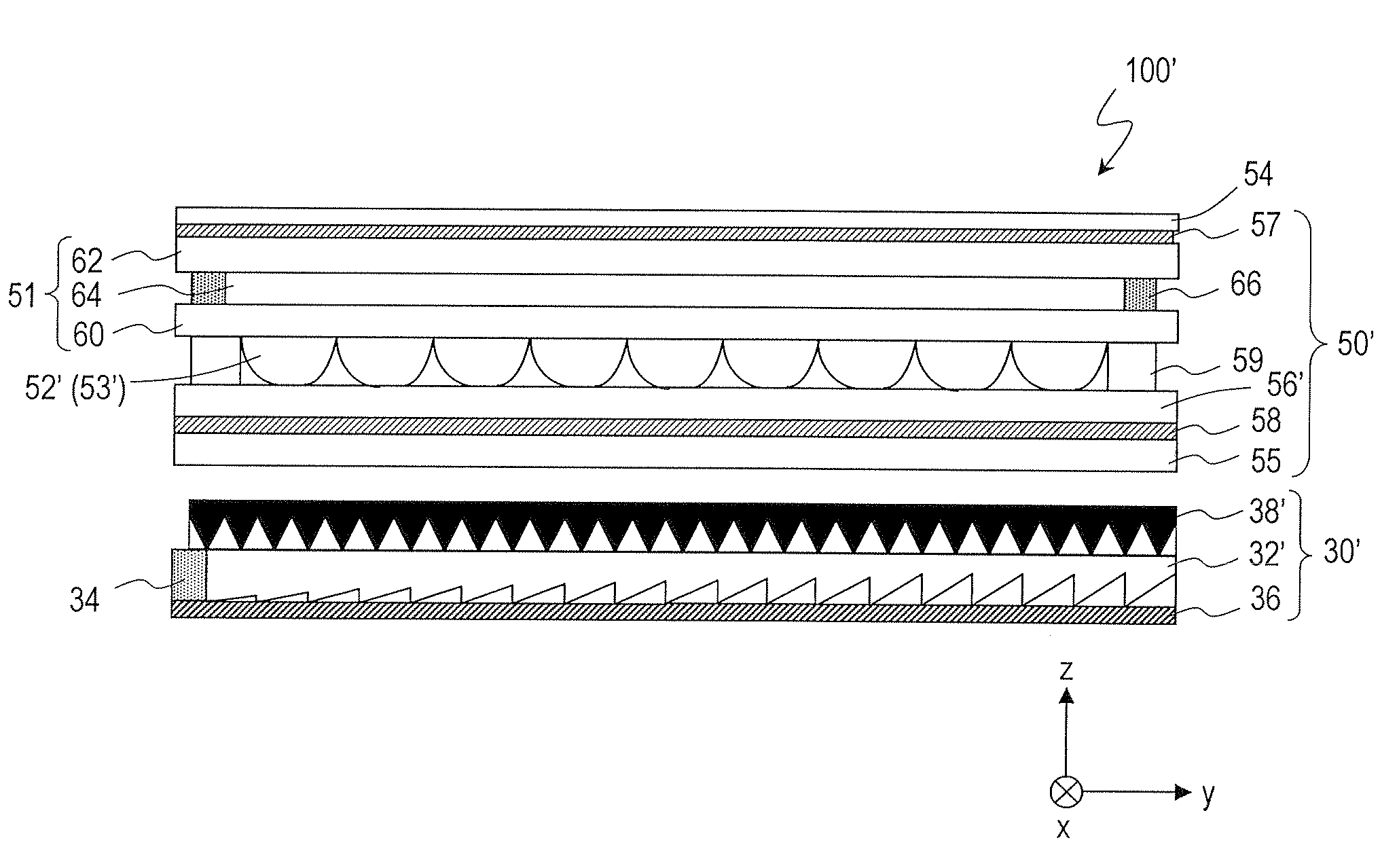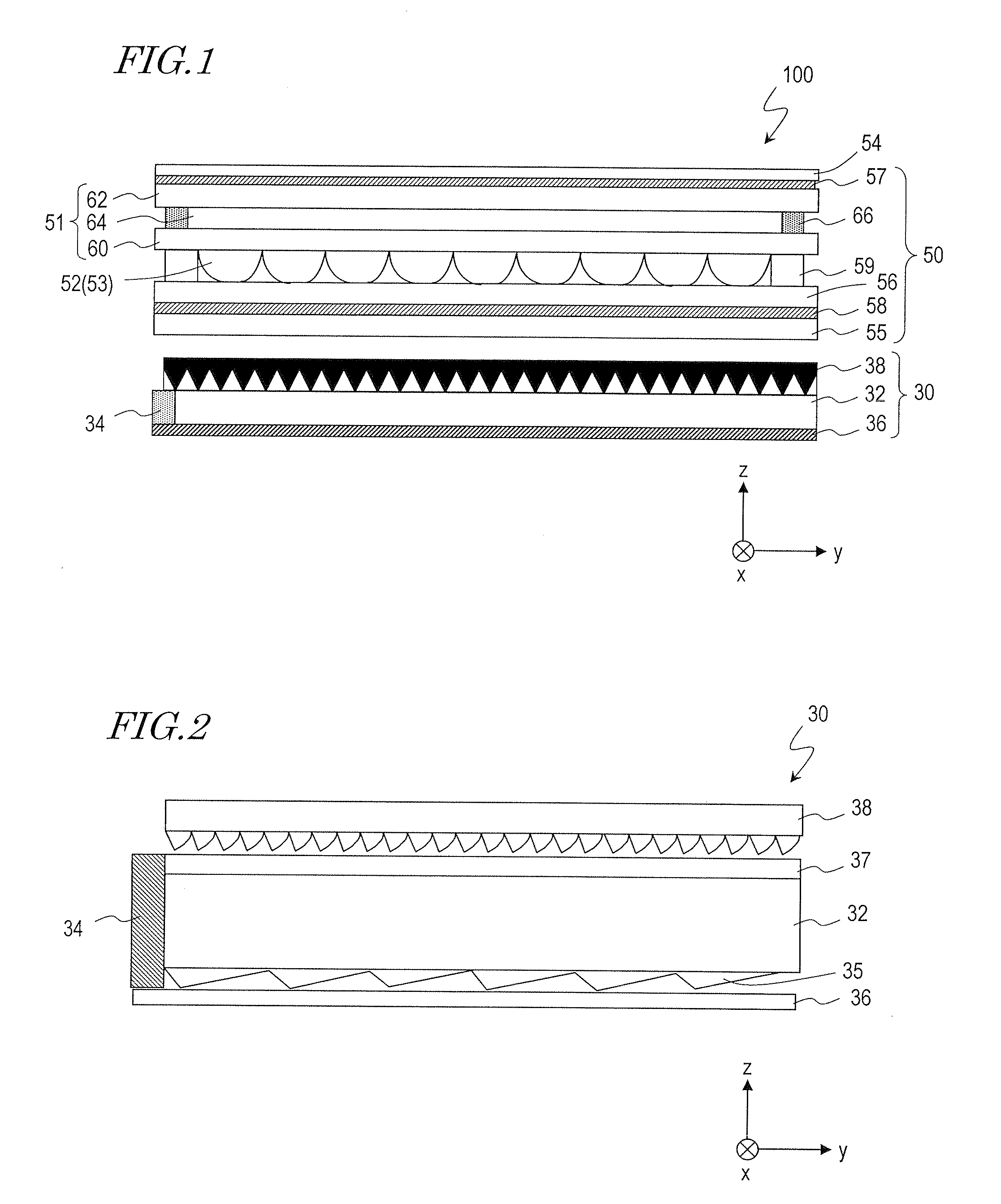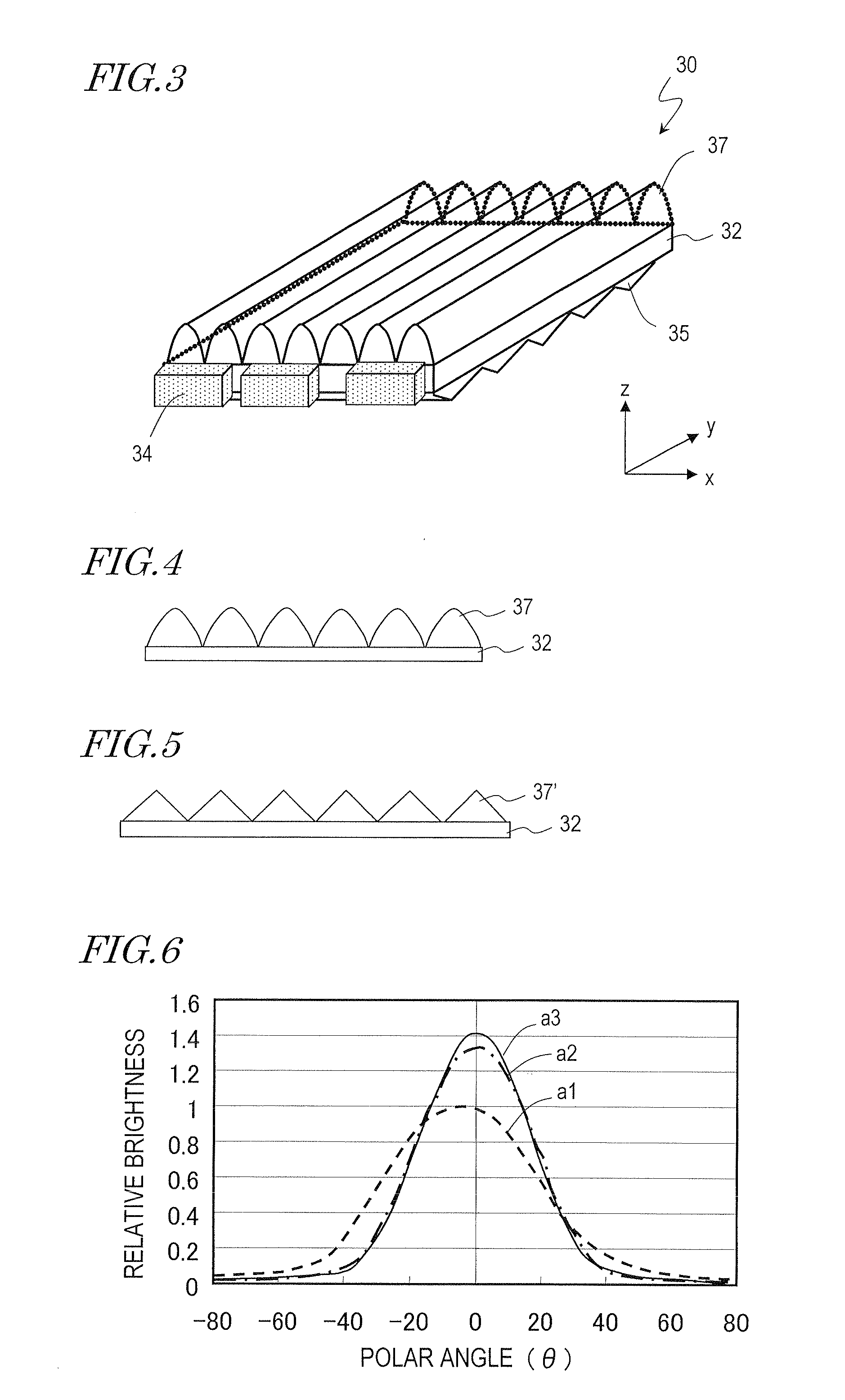Liquid crystal display device
a liquid crystal display and display device technology, applied in lighting device details, lighting and heating apparatus, instruments, etc., can solve the problems of reducing the element resistance in an off state, reducing the contrast ratio, and unable to obtain predetermined display states, so as to improve the directivity of backlight emission in the front direction in the first direction, high display light, and high front brightness
- Summary
- Abstract
- Description
- Claims
- Application Information
AI Technical Summary
Benefits of technology
Problems solved by technology
Method used
Image
Examples
Embodiment Construction
[0084]Hereinafter, an embodiment of a liquid crystal display device of the present invention is described with reference to the drawings. Note that components which are the same as those of the above-described liquid crystal display device 100′ are indicated by the same reference numerals, and the descriptions thereof are partially omitted.
[0085]FIG. 1 is a cross-sectional view schematically showing a structure of a liquid crystal display device 100 of the present embodiment. The liquid crystal display device 100 is a direct-viewing type liquid crystal display (LCD) of an active matrix type. As shown in the drawing, the liquid crystal display device 100 includes a liquid crystal display panel (a liquid crystal display panel with microlenses) 50 and a backlight 30 placed under the liquid crystal display panel 50 (on the surface opposite to the display surface).
[0086]The liquid crystal display panel 50 includes a laminate substrate 51 including a plurality of pixels which are arranged...
PUM
| Property | Measurement | Unit |
|---|---|---|
| vertex angle | aaaaa | aaaaa |
| vertex angle | aaaaa | aaaaa |
| vertex angle | aaaaa | aaaaa |
Abstract
Description
Claims
Application Information
 Login to View More
Login to View More - R&D
- Intellectual Property
- Life Sciences
- Materials
- Tech Scout
- Unparalleled Data Quality
- Higher Quality Content
- 60% Fewer Hallucinations
Browse by: Latest US Patents, China's latest patents, Technical Efficacy Thesaurus, Application Domain, Technology Topic, Popular Technical Reports.
© 2025 PatSnap. All rights reserved.Legal|Privacy policy|Modern Slavery Act Transparency Statement|Sitemap|About US| Contact US: help@patsnap.com



